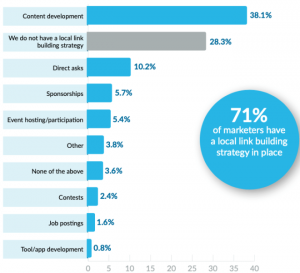 Freedom!
Freedom!
For fans of the 1995 film “Braveheart,” it’s difficult to forget the image of Mel Gibson as William Wallace, his face slathered in the blue dye of the woad, galloping hard into battle to win Scotland’s independence. An image even harder to erase is Wallace crying out “freedom!” instead of “mercy” at the hands of the British crown’s executioner. Although today’s workers are not being trampled under the oppressive boots of an invading foreign nation, or forced to accept the horrendous violations of Prima Nocte (don’t ask), many feel their own sense of subjugation under tightening corporate controls, flattening salaries, diminishing pay hikes, hostile work environments, limited opportunities and a perception of being treated as commodities rather than talent — all leading to a modernized sense of indentured service that has provoked them to utter the same cries of “freedom!”
Further complicating the situation is the waning job security offered by full-time employers. It’s now possible to sell products and services to hundreds of millions of customers without needing a large base of workers to produce, distribute or support them. In 1988, for example, Kodak had reached its apex, employing 145,000 workers. Less than 15 years later, the iconic film pioneer filed for bankruptcy. And that same year, Instagram rose to prominence with only 13 employees needed to serve 30 million clients.
All of these factors have instilled in modern workers a push toward entrepreneurialism. They seek greater work-life balance, control of their output and innovations, the flexibility to operate from locations most comfortable to them, and the power to command higher earning potential. And it’s not a movement restricted to the emerging generation of talent. Highly skilled, educated and experienced professionals are striking out on their own in greater numbers as supertemps.
Independent contractors are not gig economy free agents
Independent contracting is on the rise. However, true independent contractors (ICs) differ from the quasi-freelancers created by companies such as Uber and others championing the gig economy. We say this because those who work gigs appear to be a new class of free agent; they have autonomy, yet not complete control. Uber sets the fares for each service in each city based on its own formula, which is calculated using either per-mile or per-minute rates, on top of a base fare. Genuine ICs determine and negotiate their own rates with clients. They possess refined and in-demand skills. They often bring a rare expertise that clients can’t find in the typical labor pool. They operate as micro-business entities. So how do these professionals become ICs and monetize their services? Let’s take a look at the best practices.
Basic considerations
The biggest difference between talent who seek full-time employment and those desiring self-employment is motivation: are you inspired to be an instrumental member of a team or are you driven to build a business in your unique vision as an entrepreneur? Each situation has its pros and cons. So before considering a move toward independent contracting, interested talent should understand how the nature of self-employment affects the following vocational factors: psychological, operational and financial.
Psychological
- An IC, especially a very social one, must come to grips with feelings of isolation and loneliness from the autonomous nature of the work. However, independent contractors are spared from the drama and politics that can pollute an office environment.
- ICs aren’t confined by the glass ceilings employees often hit. They make their own opportunities, set their own destinies and dictate their upward mobility. They must, however, continuously market or resell their services, and may encounter challenges with budget planning.
- Successful ICs must exhibit exceptional levels of self-discipline. Employees, on the other hand, receive structural motivation to succeed from the leadership of the organizations they support.
Operational
- Independent contractors have a tremendous advantage when it comes to intellectual property. They retain their copyrights and patents. This helps ICs distinguish themselves, protect their inventions or ideas, and better market themselves as experts. Work created and produced by employees, no matter how original, can become the property of their employers under work made for hire rules. Regardless of the ethics and integrity behind the actions, employers can even sign their names on the work as the authors, creators or inventors, which makes it harder for employees to stand out or claim credit for their unique contributions.
- Independent contractors set their own hours, fix their own schedules and work where they choose.
- Despite the potential for revenue losses, ICs also enjoy greater gains; unlike salaried employees, ICs have no limits or barriers imposed on their ability to realize increasing profits.
Financial
- Independent contractors have no payroll taxes withheld, and they will inevitably incur higher self-employment tax burdens. As their incomes rise, ICs will also encounter greater tax obligations. That said, ICs have opportunities to claim deductions, write off expenses and seek relief for losses that full-time employees don’t.
- The Affordable Care Act has made it easier for ICs to procure health insurance at competitive rates. Prior to the ACA, statutory employees generally had a better deal through employer-sponsored benefits.
- Independent contractors will face startup, operating, equipment and maintenance costs.
Steps to becoming a compliant, low-risk independent contractor
Becoming a true independent contractor means turning yourself into a small, separate business entity. The nature of the working relationship between ICs and clients is not without risk. By taking every precaution to establish yourself as a self-governing operation, you can mitigate exposure to these risks — for you and your clients.
- Create a business name and file it with federal, state, county and city registries to ensure legal compliance. Even when operating as a sole proprietorship, obtaining a fictitious business name (DBA) is highly recommended. Even better, if you can register as a limited liability company (LLC), you can distance yourself from claims that could impact your personal assets.
- Apply for an employer identification number (EIN) in order to open business bank accounts, get insurance, register for workers compensation and others.
- Open a bank account, separate from your personal accounts, in the name of your business.
- Purchase an insurance policy. Under ACA, this is now required. Failure to do so will result in tax penalties at the end of the year. Counties and states post their own mandates, so be sure to procure a plan that at least satisfies the minimum obligations.
- Apply for a contractor’s license from your county and/or state. In most U.S. states, this is mandatory.
- Create credit accounts for security and a few with local vendors you may need. The credit lines available to you initially could be low. However, after building a client base and growing your business, the credit amounts will become more reasonable.
- Design, deploy and maintain a web presence for your inbound and outbound marketing efforts. Exposure is great, yet to be effective you must post content regularly across your website, blog and social networks. If you lack the programming skills, locate a designer at an affordable rate — perhaps even a college student, friend or known associate.
- Establish a dedicated phone line and email address. If you don’t want to pay for a new data plan on your phone, consider a service such as Google Voice — it allows you to create a new phone number that links directly to every other number you have. To clients and prospects, it appears to be a dedicated business line.
- Market yourself. Although inbound marketing is one of the most effective tools in your arsenal, a good number of customers still respond to traditional outbound marketing: ads in local papers, telephone directories, magazines, lists, professional associations, community organizations, colleges and more.
- When you can afford to, consider retaining an attorney to advise you on all legal matters that could pertain to your business and its security.
Learn more about Independent Contractor Compliance.
Monetizing your services
Determining rates can be a very tricky task. Make sure to execute a written personal or professional services agreement with your client. Reputable organizations will disclose the terms and conditions of payment through a documented compensation agreement, which should delineate all remuneration factors: commission-only basis, draw vs. commission, base fee plus commission, set project rate and the payment terms (half up front, full on completion, weekly, monthly, etc.). The agreement, among other things, should spell out the process for handling dispute settlements, arbitration, scopes of work (SOW), mutual nondisclosure and confidentiality clauses, intellectual property rights and more.
When establishing your compensation, it’s critical to understand market rates, the value of your skills and the fact that the work may not be steady — you’ll want to calculate some sort of buffer to carry you through to the next contract. And while there is no universal formula, here are some solid guidelines to help.
Determine your desired annual salary
Carefully assess what you want and can make, then figure out rates based on your ideal payment terms: hourly, monthly, full contract and so on. Let’s use hourly as an example. A simple way to reckon your hourly rate is to take what you want to make and divide it by 2000 (8 hours a day * 5 days a week * 52 weeks in a year and then round off to keep the math simple). You also want to pad the cost to cover gaps between assignments. Adding a 30-percent buffer, for instance, would be considered typical.
Compute your overhead
As an independent business, you’ll have to sustain overhead operating costs. In addition to benefits, insurance and tax obligations, these costs could include:
- Phone, data and Internet expenses
- Office equipment, supplies and furniture
- Rent
- Utilities
- Postage and shipping costs
- Business-related meals and entertainment
- Administrative assistance
- Travel expenses
- Professional memberships, credentials or licenses
- Legal and accounting fees
- Advertising and marketing costs
Determine a reasonable profit margin
You are entitled to realize a profit in addition to meeting overhead expenses and taking a salary. Profits are generally expressed as a percentage of total costs. It helps to calculate an estimated return on investment (ROI), which can be represented simply as (gain from investment – cost of investment) / cost of investment. While there’s no universal standard for profit margins, the most common range used by independent contractors falls between 10 percent and 30 percent.
Calculate billable hours
ICs will want to determine the number of hours they’re planning to work, and receive compensation for, during the business year. While a 40-hour week would be typical, an IC may want to factor in vacation time. The longer the holiday time allocated, the fewer the billable hours. Another consideration comes from the amount of administrative time ICs will spend keeping house: billing and invoicing clients, filing reports, bookkeeping, marketing for new business, continuing education for new skills, and more.
Example scenario
An independent contractor specializing in software design earned $ 80,000 per year as an employee. He wants to make the same salary as an IC. Annual overhead is estimated at $ 20,000 per year, with 1,500 billable hours projected and a desired profit margin of 10 percent.
- Add the salary and overhead: $ 80,000 + $ 20,000 = $ 100,000.
- Multiply the total by the profit margin and add this amount to the salary and overhead figure: ($ 100,000*10%) + $ 100,000 = $ 110,000.
- Divide this total by the annual billable hours to arrive at the hourly rate: $ 110,000 / 1,500 = $ 73.33.
Independent contracting can be a liberating and lucrative alternative to traditional employment, particularly for professionals with highly sought-after skills, marketing savvy, sharp business sense, motivation and careful planning.
(288)







